By Liam Maier, ESPM Graduate Student, Master of Forestry
In September, I traveled to Japan to take part in a two-week long field lecture series hosted by professors and researchers of Shizuoka University. I joined graduate and undergraduate students from China, Thailand, Indonesia, Vietnam, and Japan for a cultural exchange set in some of the country’s most interesting forested landscapes. The program was designed to facilitate discussion of issues surrounding forest management and forest policy on the global scale. Students presented their research and introduced forest ecosystems within their home countries, and instructional sessions were held at field sites located throughout the prefectures of Shizuoka and Gifu. The trip was an unforgettable experience that left me with a greater understanding of some of the issues Japan’s forest owners and managers face.
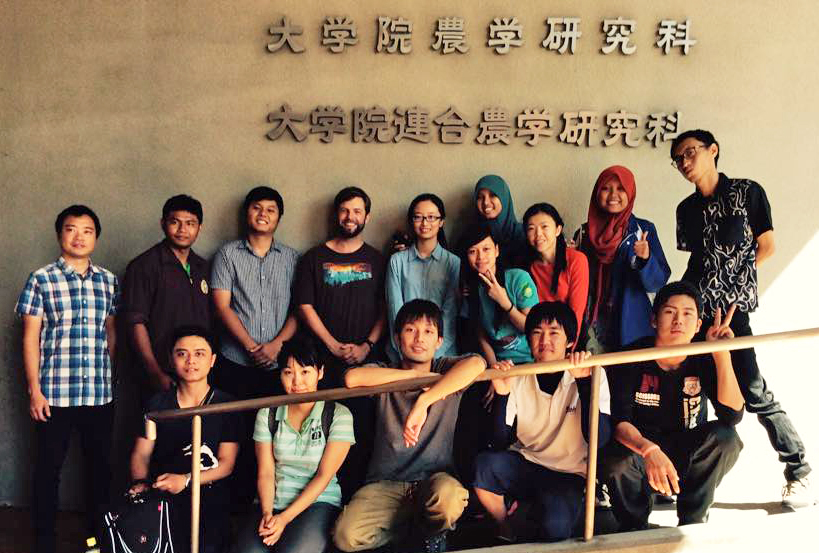
Students from Japan, Thailand, Indonesia, China, Vietnam, and the United States took part in Shizuoka University’s forestry field lecture series this fall. All photos courtesy of Liam Maier.
Forestry has been practiced in Japan for centuries, and many of the native broadleaf forests have been replaced with plantations comprised of cedar, cypress, and non-native pines. Plantation forests are a common type of man-made ecosystem found in the timber producing regions of the world. Typically, plantation managers, who grow trees for their wood, plant trees all at once and then harvest them all at once. This practice usually generates even-aged forests with narrow ranges of tree ages, low species diversities, and uniformly spaced trees. Many of the plantations in Japan were established in the wake of WWII, and since that time domestic and international demand for Japanese timber has diminished due to an increase in the global availability of less expensive (and in some cases superior) forest products. The decline in demand has brought tough times to many of the rural areas where local harvesting and milling activities once supported vibrant economies. People have begun to move away in search of job opportunities; as they do so, an increasing number of the country’s plantations are being abandoned. Forest managers who have remained behind are now faced with tough questions about what to do next. Do they begin converting the forests back to their native vegetation types and restore the ecosystems, or do they elect to maintain the plantation systems and hope that demand for Japanese forest products picks up again in the future?
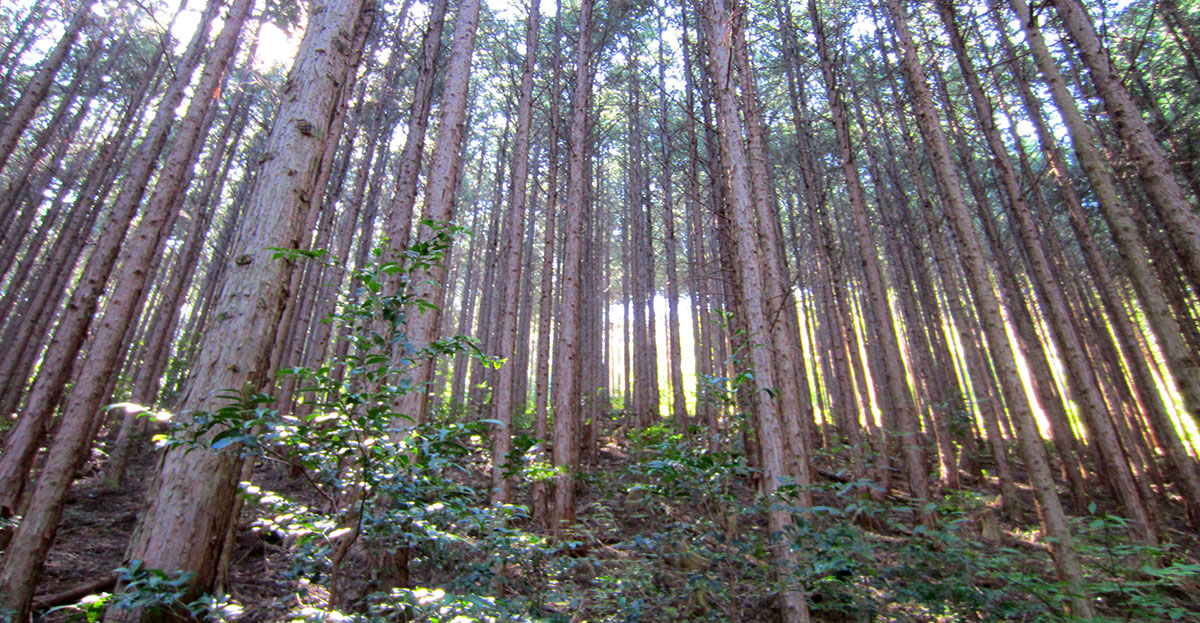
Plantations of hanoki cypress (Chamaecyparis obtusa) and sugi (Cryptomeria japonica) in the Tenyru River area, like the one pictured here (above), are characterized by narrow ranges of tree ages, low species diversities, and uniformly spaced trees.
Shizuoka University owns and operates a series of experimental forests where researchers are working to produce the science that will guide forest managers in Japan through this tough decision. The field lecture’s organizing professor, Mizunaga-sensei, has focused some of his efforts on finding ways to bring diversity back into abandoned or underutilized plantations. During the field lecture, we visited a research site in the Tenryu River area, where Mizunaga-sensei and his colleagues are working to understand the dynamics associated with the reestablishment of native broadleaf tree species in forests that are no longer being intensively managed for timber production. The ecology associated with this process, however, is far from simple. Coming up with recommendations that can be passed along to natural resource managers attempting to meet similar objectives is a time-consuming challenge, and transitioning a forest back to its pre-plantation state may take lifetimes to achieve.
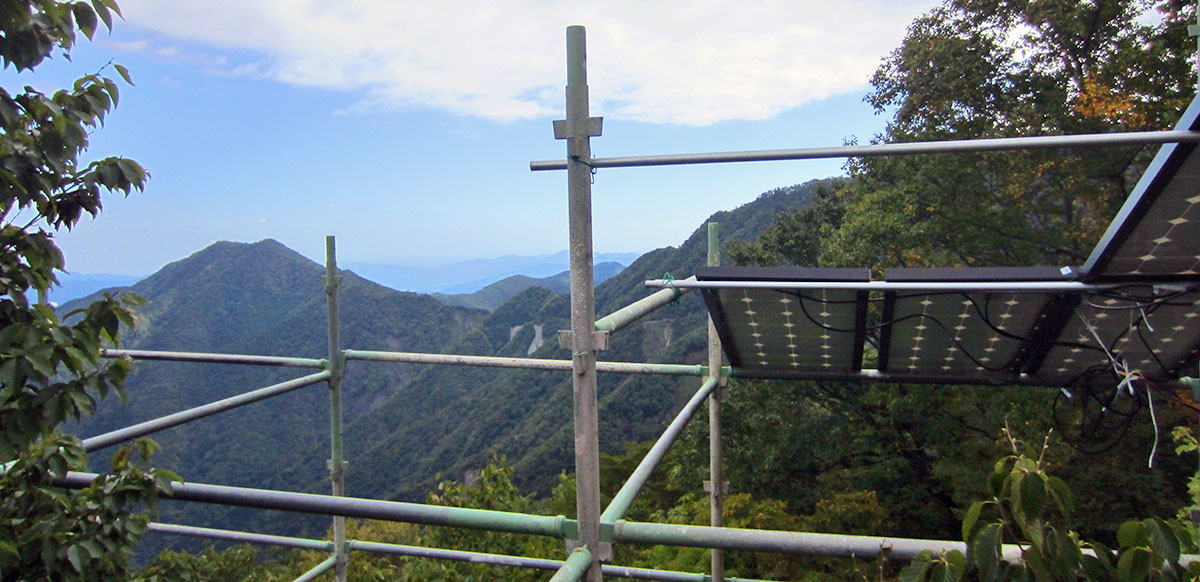
View from the top of an extensive scaffolding structure erected to facilitate the study of a broadleaf forest canopy at Shizuoka University’s Nakakawane Research Station.
In addition to the restoration project in the Tenryu River area, Mizunaga-sensei also showed us a quite different situation related to the decreased demand for Japanese forest products – this time, in the community-owned Imasu forest. Unlike the plantation forests that are managed by private timber companies or prefectural governments, the Imasu forest is owned by many people who supervise their portions of land independently. Every year, each family decides which trees to harvest from their piece of land, and plants new trees to replace those removed. Younger trees are then available to occupy spaces created when trees in older age classes are harvested or grow into the next age class; and a complex forest structure, where trees of many different heights, diameters, and ages can be found in close proximity to each other, develops. This type of forest structure is often seen as being more natural; it also provides a steady flow of revenue for families that choose to harvest only a few of their largest trees each year.
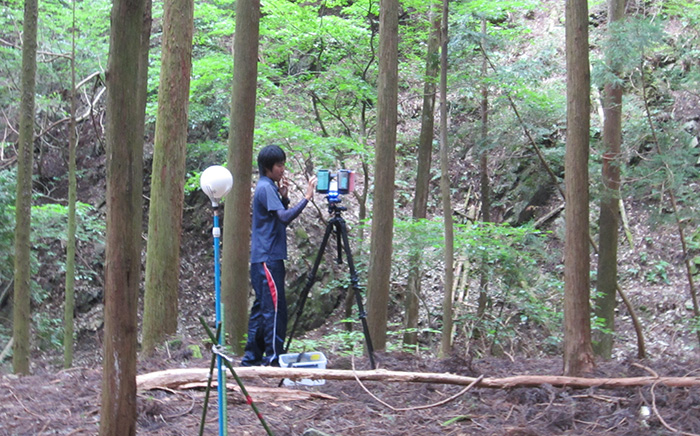
Shizouka University graduate student sets up a terrestrial LiDAR scanner to study the photosynthetic area of the tree canopy in the Imasu Forest, Gifu Prefecture. Since trees are harvested and replanted at various times rather than all at once, the forest includes trees of varying ages and sizes that are in close proximity to one another.
Unfortunately, the lack of demand for Japanese timber has created a situation where many forest parcel owners in the Imasu community are holding on to their standing timber inventories for longer periods of time, as they wait for the value of their assets to come back. Since larger trees aren’t being harvested as often, new trees subsequently also aren’t being planted, and the age range of trees in the forest is shrinking. Eventually, the lack of regeneration could lead to a situation where the forest’s structural diversity is lost and owners lose the ability to steadily extract logs from their land. The decision to decrease the volume of timber sold also hurts local logging contractors, who have come to rely on a steady supply of timber from the Imasu to support their small-scale harvesting and milling operations. Their milled products are typically sold to consumers in the nearby cities of Ogaki, Nagahama, and Hikone. This production chain returns a large part of the value of a tree grown on the Imasu forest to the people of the region.
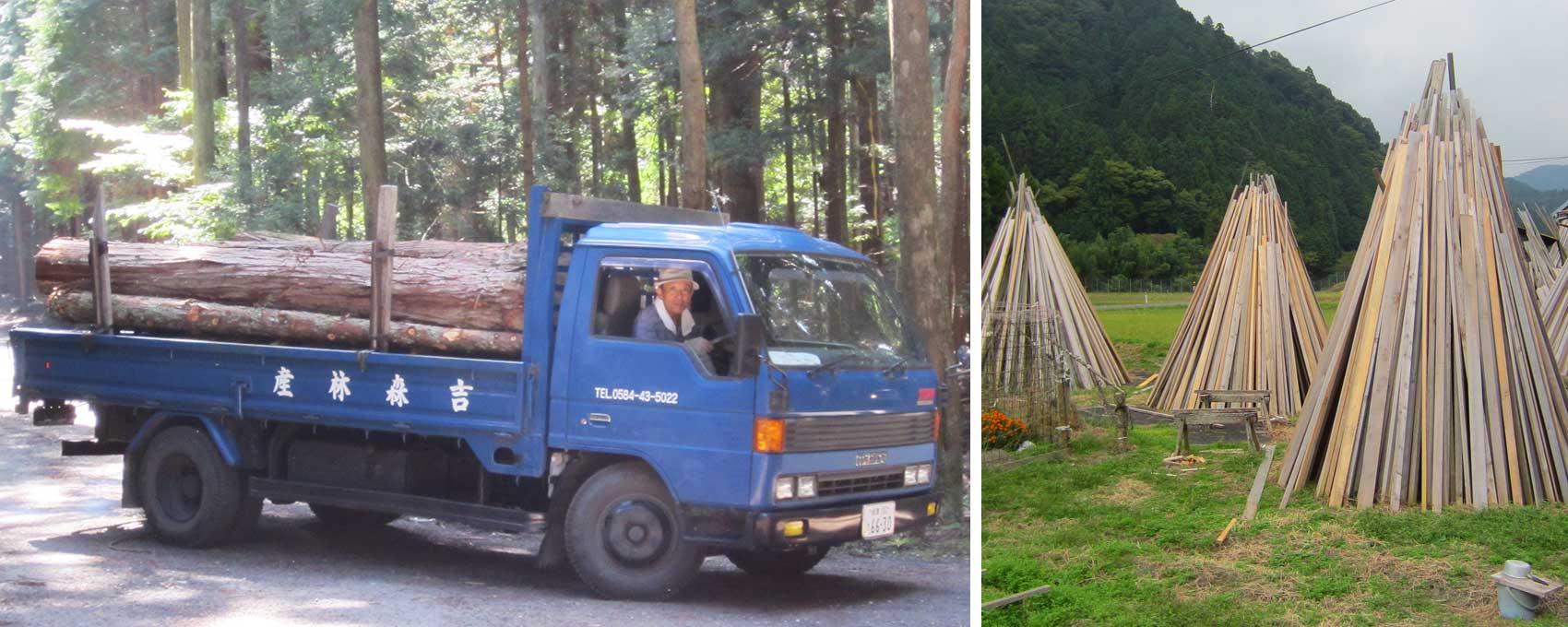
(Left) Local logging-contractor transports a load of timber from the Imasu forest to his mill in the nearby village. (Right) Stacks of lumber outside of a community mill in the village of Imasu.
In order to maintain the current structure of the forest and to avoid a total shutdown of the local milling industry, many believe that owners should accept the low prices they will receive for their timber in current markets, and continue to thin the trees to open up growing space for younger trees. Understandably, this is a painful solution that most are unwilling to accept. Some hope that if consumers were made aware of the unique aspects of Imasu timber production, perhaps they would be willing to pay higher prices for the commodity and this local industry’s vibrancy could be restored.
Mizunaga-sensei showed us, through visits to the plantation forests in the Tenryu River area and the community-based forest of Imasu, the state of forestry in Japan today. After our days out in the field, we were treated to traditional Japanese dishes prepared by the graduate students of the forestry department at Shizuoka University. As we ate, we discussed what we had learned during the day's lectures, and shared stories about the ways of life in our own countries. This opportunity to view Japan through the lens of forestry, and to learn from others from all around the world, was a unique and unforgettable experience. If you are interested in hearing more stories from my trip to Japan or would like to discuss forest management in general, please do not hesitate to contact me at wmaier@berkeley.edu.
